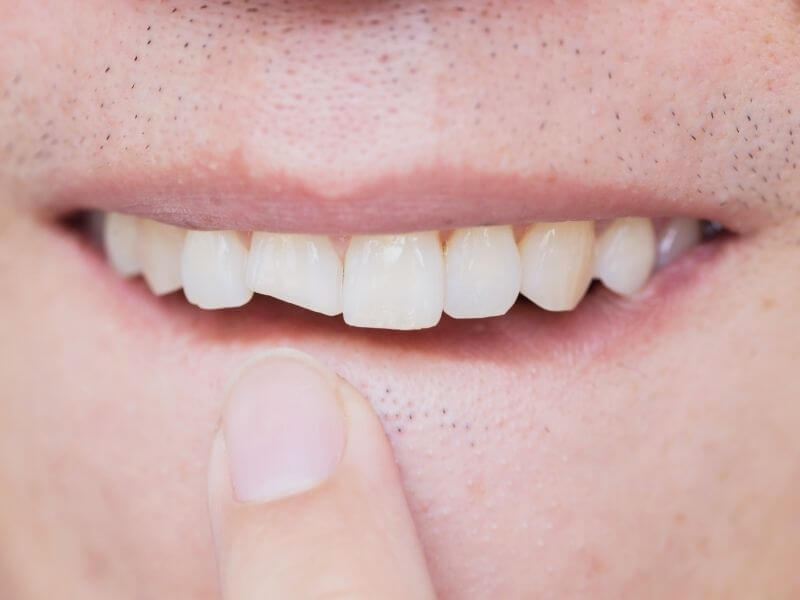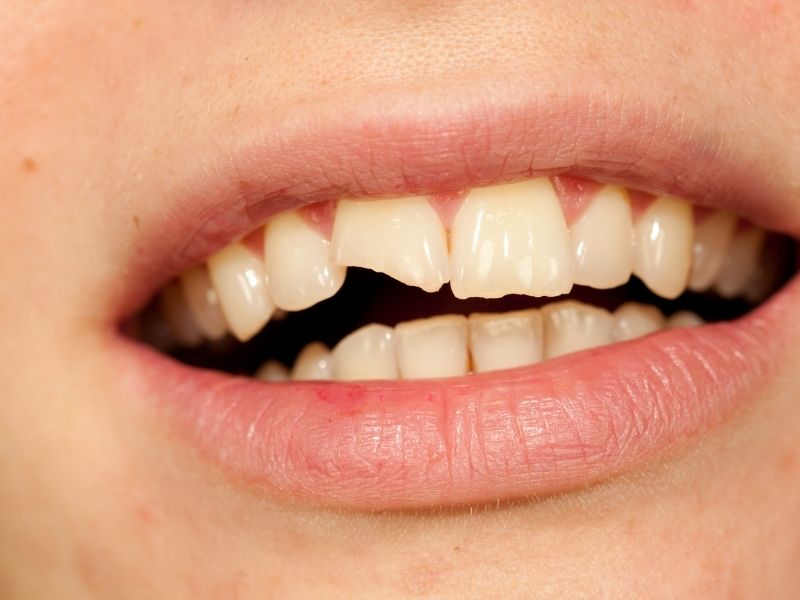how to fix a chipped tooth at home
Tooth enamel is the hardest substance in your body, harder even than your bones. Hard as your teeth are, they're no match for the stress of car accidents, sports collisions, trips-and-falls, playground roughhousing, or even just biting down on some hard candy.
Chipped, broken, and dislodged teeth are common. Each scenario can be very painful and can result in serious dental issues that will need dental attention — sometimes urgently. We'll break down what you should do if the unfortunate happens. Soundview Family Dental can help with every consequence of a chipped, cracked, broken, or dislodged tooth.

What to do if you break or chip a tooth?
The damage that you can do to your teeth runs the gamut from a tiny chip or crack to snapping a tooth or having one completely dislodged. As for how to respond immediately and what you should do next, there are a lot of things in common, but we'll consider them separately: chipped and cracked teeth; and broken and dislodged teeth.
Chipped and cracked teeth
Chips and cracks are common, and most often occur when you're chewing or biting something hard or doing something you shouldn't be doing with your teeth — like trying to open a bottle. Depending on the location of the chip and depth of the crack, you may experience pain or simply notice a sharp edge or unexpected crunching sound in your mouth.
As soon as you identify you've cracked or chipped a tooth, rinse your mouth gently with warm water to clean any food debris away from the area. If you can salvage any chips, wrap them up in moist gauze.
Unless you're experiencing significant pain or bleeding, a chipped or mildly cracked tooth is not generally a dental emergency. For mild pain or discomfort, use a cold compress (or ice or frozen peas wrapped in a clean towel) and over the counter pain medication. If you'd prefer a natural remedy, you can apply clove oil or even a wet peppermint tea bag to the sore area for some relief.
While small chips and cracks are not emergencies, you should still contact your dentist to tell them what happened. Describe the location and depth of the damage and the symptoms you've experienced. Your dentist will know your dental history, including any tooth decay or particular vulnerability to infection. Chips and cracks are potential invitations to tooth decay and bacterial infection and maybe much more significant than they appear to you in your mirror. Your dentist will recommend whether to come in for a follow-up appointment and how quickly.
Broken and dislodged teeth
If your tooth has broken or become completely dislodged from your mouth, you're dealing with a dental emergency. There are some things to do immediately but, once they're been dealt with, the next step is to call an emergency dentist for an assessment and appointment as soon as they recommend. Your goal should be to get in touch with a dentist within 30 minutes.
If you can find the broken piece of your tooth, or the whole tooth that was knocked out of your mouth, try to salvage it so that your dentist has the option of restoring it to your mouth if possible. If you find the broken or dislodged tooth, rinse it very gently but be careful not to wash away or detach any tissue or material that is still attached to it.
If your tooth was knocked right out, place it back into its socket if you can do so without forcing it and without any risk of swallowing it. If you've broken off just a piece, or putting the whole tooth back into its socket is not an option, then put it in a clean container with milk, saline solution, or saliva and take it to the dentist with you when you go.
A broken or dislodged tooth is going to hurt, and may result in some swelling and bleeding. You can minimize the swelling and bleeding by holding a wet compress against the gap in your jaw or even against the outside of your face on the affected side. If you don't have a cold compress, make one by wrapping a clean cloth around some ice or a small bag of frozen peas.
An emergency dentist will help you with the pain right away but, until then, take over the counter pain medication. When swallowing the pills, be careful not to let them come into contact with the inflamed gums around your damaged tooth. Those pills can burn that inflamed gum tissue.

Temporarily fixing a chipped tooth
You may notice a sharp or jagged edge or corner of your tooth where the chip came off. That sharp or jagged edge creates a risk that you may bite the inside of your cheek or tongue accidentally. Those accidental nicks can be uncomfortable and raise the risk of infection. While waiting to go to the dentist, you can protect yourself from that sharp edge in a couple of ways.
Many drugstores sell emergency dental kits that include paraffin wax. You can soften some paraffin wax between your fingers and then place it over and around the chipped tooth to provide some protection. If you're all out of paraffin wax, you can also use chewing gum — sugarless! — in the same way.
What NOT to do at home
We can wrap this section up in section in five easy words — don't pretend you're a dentist. There are a few more don'ts to add. Don't try to smooth down the edge of a jagged tooth with a file or sandpaper. Enamel and the dentin beneath it are important substances to your oral health, and dentists can preserve them while fixing a chipped or broken tooth. DIY tooth contouring is very likely to make a chip or crack worse than better and may introduce bacteria to the damaged area.
Don't try to pull a broken tooth or a nearly dislodged tooth with pliers or any other tools. You'll complicate the situation by causing infections and cause yourself an incredible amount of pain. Your dentist will assess what needs to happen next and is trained and equipped to do what is necessary painlessly and without causing infection.
Finally, don't assume that the chip or crack is as small as it looks to you. Your dentist knows the structure of your teeth intimately, and can even take images to see whether the crack or chip is threatening the integrity of your tooth altogether. If the crack or chip is worse than it looks, you want the dentist to know that as soon as possible so they can act quickly to preserve your tooth and oral health.
When is it an emergency?
Broken or dislodged teeth are always emergencies. Even if you experience no other symptoms, contact an emergency dentist if you've suffered a broken or dislodged tooth. If your tooth is merely cracked or chipped, call the dentist when it is convenient to do so for their advice and assessment. But if you experience any of the following symptoms after suffering a cracked or chipped tooth, contact an emergency dentist: persistent or worsening bleeding; persistent or worsening swelling; fever; or a metallic taste in your mouth.
See professional help even after home care
The home remedies for chipped, cracked, broken, and dislodged teeth are not permanent solutions. They're just ways of responding in the moment, to buy you time until you see a dentist. Do not underestimate the importance of your teeth — even baby teeth — to your overall health. Your dentist will take all steps necessary to eliminate pain, restore your teeth if possible, offer alternative solutions such as implants if your tooth cannot be restored, and protect you from any risk of infection.
Chipped, cracked, broken, and dislodged teeth are unfortunately very common. So too are the complications of all those issues — including unnecessary permanent loss of natural teeth, loss of dental function, and infections. The good news is, all of those complications can be avoided by acting quickly and getting timely support from a dentist. If you've suffered a chipped, cracked, broke, or dislodged tooth, contact us so we can help you immediately.
how to fix a chipped tooth at home
Source: https://soundviewfamilydental.com/blog/how-to-fix-a-broken-tooth-at-home/
Posted by: rodriguezplad1987.blogspot.com

0 Response to "how to fix a chipped tooth at home"
Post a Comment